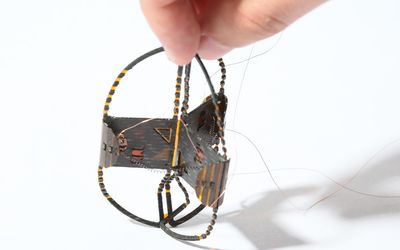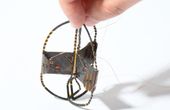SALTO
A jumping robot that achieved 78% of the vertical jumping agility of a galago. This is achieved through the use of a specialized leg mechanism designed to enhance power modulation. The robot uses a small motor and a system of linkages and gears to jump. Because it spends so little time in contact with the ground, the robot needs to do most of its control in the air. To do that, it uses a rotating inertial tail and two little thrusters to stabilize and reorient itself in between jumps.
Technical Specifications
| Mass | 0.1000 |
| Leg length | 0.15 |
| Jump height | 1 |
| Jump frequency | 1.74 |
| Vertical jumping agility | 1.75 |
| Power density | 137 |
Overview
This is achieved through the use of a specialized leg mechanism designed to enhance power modulation. The robot uses a small motor and a system of linkages and gears to jump. Because it spends so little time in contact with the ground, the robot needs to do most of its control in the air. To do that, it uses a rotating inertial tail and two little thrusters to stabilize and reorient itself in between jumps. This method allows more energy to be transferred from the jumping motor into the spring.
The mass and leg extension have been fixed to that of the galago (0.25 kg and 0.15 m, respectively), and the team explored the choice of rigid, parallel-elastic, series-elastic, and SE+MA actuators for two different power densities. The rigid and parallel-elastic actuators have been idealized as constant power motors, thus including robotic designs with specialized transmissions.
References
Provides detailed description of the Salto project; its goal, requirements, and design strategies for designing a robotic galago and shows the fabrication and operation of the prototype.
Outlines the development of the robotic hardware, attitude controllers, locomotion controller and experimental procedure. Results for attitude control and jumping experiments are given, and conclusions are discussed.
Recommended Specs
Continue Reading
Meet Tribot, the three-legged origami robot designed and built by EPFL scientists. Tri- for three legs and -bot for robot, this super-light critter fits in the palm of your hand, is cheap to build, runs on less than one watt of power, and may one day be deployed in mass for search and rescue mission










